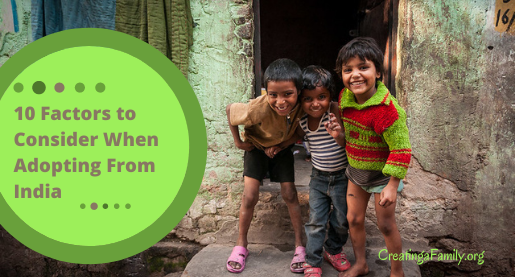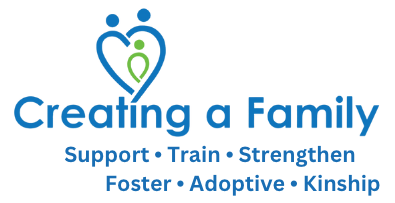
1. The Parents
In addition to meeting the USCIS requirements for international adoption, to adopt from India, at least one parent must be a US citizen. The program is open to heterosexual couples married for at least two years and single persons. Single men are only eligible to adopt boys. Same-sex couples are not eligible for this program. Prospective parents must be physically, mentally, and emotionally stable without life-threatening conditions. If you have medical conditions, please speak with your selected agency for more specific guidance.
Parents must be at least 25 years older than the child but no older than 55. The following age parameters determine the age of the child for which you qualify to adopt:
- The parents’ combined age must be less than 90 years to adopt a child younger than four.
- To adopt a child between 4 and 8 years old, the parents’ combined age must be less than 100 years.
- To adopt a child older than 8, the parents’ combined age must be less than 110 years.
2. The Family
Families with fewer than three children (biological or adopted) are eligible to adopt through the India program. The notable exception to this is when the child being adopted has special needs or has been determined “hard to place,” or in the case of a relative or stepparent adoption. Please inquire with your adoption service provider about additional requirements regarding adoption into a family of more than three children in the home.
Subsequent adoptions from India are considered only after the first child’s adoption is finalized, except in the case of siblings who are adopted simultaneously.
There are no specific income requirements to adopt from India; however, the minimum household income must be 125% of the poverty guidelines established by the U.S. Health and Human Services.
3. The Kids
The Hague Convention and India’s CARA (Central Adoption Resource Authority) criteria determine children to be eligible for adoption. The waiting children in the India program are boys and girls aged six months to 15 years, including some sibling groups of older children. Prospective parents can specify gender. Adopting more than one unrelated child at a time is not permitted. Adopting a healthy child younger than six is typically reserved for domestic adoption or families with the OCI card or NRI status.
The children are Southeast Asian of Indian descent and typically come into orphanage care due to poverty, disease, family loss, or other family issues. Children known to be of Tibetan descent are not eligible for adoption through CARA. The orphanages are licensed by CARA for the facilitation of either domestic or intercountry adoption and are held to government-mandated standards of care.
4. The Process
India’s adoption program is a party to the Hague Convention, and choosing a Hague-accredited adoption service provider (agency) is your first step. Once you have chosen an agency, they will get you started by conducting the home study. If your agency cannot provide home-study services in your state, they can offer guidance for choosing a home-study provider that meets their criteria and the Hague Convention requirements.
Your placing agency will guide you through the process of I800 approval through USCIS and compiling your dossier. The agency will authenticate and submit your dossier to CARA for registration to the India adoption program. Once registered, matching can take place through the online portal program. Depending upon your eligibility and openness to gender and medical needs, the wait for a referral can be 3 to 12 months. Your agency will assist in discerning the information in the referral though details are often limited.
Once a waiting family accepts a referral, the agency sends your dossier and immigration paperwork to the specific orphanage where the child resides to finish the international adoption immigration process. When the child’s Indian birth certificate and passport are obtained, families travel to the orphanage. Travel typically occurs about 7-11 months after their dossier was sent to India and the Indian adoption agency filed the no-objection certificate (NOC).
Upon arrival at home, your agency may guide you through the final adoption requirements of your state regarding issues like a Certificate of Citizenship, name change, re-adoption, Social Security, or state-issued birth certificates.
5. The Travel
Once a family arrives at the child’s orphanage to meet and take custody of the child, they must travel to New Delhi for the final process steps, including the medical exam and embassy procedures at the US consulate. Most regions require both parents to travel, though some states will allow one parent. A select few states will require more than one trip, but generally, the process is complete in one trip.
Parents should expect to be in India for approximately two weeks, though your agency will give you more specific guidance and the travel agenda once approval to travel is issued. Check with your adoption agency for how they support families while in-country, as some provide guided travel, some send families in groups, and others rely on in-country consultants.
6. The Program
India’s adoption program is gaining popularity thanks to increased awareness of its stability. As a party to the Hague Adoption Convention, India placed 223 children for adoption in 2022. This compares to 245 in 2021, 103 in 2020, and 241 in 2019. In 2022, approximately 33% of those children were boys, and 67% were girls.
7. The Cost
The Median Adoption Service Provider Convention Fee for 2022 was $36,122.00, according to the US State Department’s FYE 2022 Annual Report. This may not include documentation and notarizations required for a dossier or education fees. Check your preferred provider’s fee schedule for breakdowns. Families should expect their total cost to range from $25,000 – $40,000 plus travel expenses.
8. The Needs
The special needs of the India program range from mild to moderate in severity. Some of the most common medical needs include heart conditions, blood conditions (including HIV), limb differences, vision or hearing impairments, cleft lip/palate, developmental delays, spine conditions, cerebral palsy, and more. Many needs can be corrected or managed by surgery or therapy, and many children receive therapy or surgery in India.
The children are typically tested for HIV/AIDS, Hepatitis B, and TB. Generally, waiting children with special needs have more information in their files. Parents are recommended to seek a review of the medical information with a reputable international adoption specialist for further understanding of the child’s needs.
India has a high malnutrition rate, and low birth weight is common, both of which can contribute to long-term needs for the child. Historically, drinking during pregnancy is uncommon, and international adoption doctors report not seeing much evidence of fetal alcohol spectrum disorder (FASD).
9. The Post-Placement Reports
CARA (Central Adoption Resource Authority) requires adoptive parents of Indian children to submit online post-placement reports through their placing agency to the Child Adoption Resource Information and Guidance System (CARINGS) quarterly during the first year. Post-placement reports are required twice a year during the second year after the child’s arrival in the United States. The reporting continues for two years after the child acquires U.S. citizenship.
Post-adoption reports should contain detailed information about the child/children’s development and family photos. Your adoption service provider can provide a form, a template, or other guidance for a report’s content.
Creating a Family always urges families to comply with post-adoption requirements in a timely manner. Your cooperation contributes to the program’s stability and adds to India’s history of positive experiences with US citizen parents.
10. The Additional Resources
The following additional resources can help you learn more about adoption from India:
- U.S. Department of State Intercountry Adoption from India
- U.S. Department of State Annual Report FY 2022 on Intercountry Adoption
- U.S. Department of State Adoption Statistics
- Creating a Family’s International Adoption resource page
- Children’s Home Society/Lutheran Social Service of MN’s Adopt from India page
- Children’s House International India adoption program
This information is current as of September 2023 and represents only our best estimates and approximations. Depending upon your individual circumstances, even the widest ranges can vary greatly. Please refer back to your chosen adoption service provider for specifics regarding your process.
This information is subject to change; therefore, check with an agency approved to place from this country for the most current information.
© Creating a Family
Image credit: Michal Huniewicz; Mondo79

